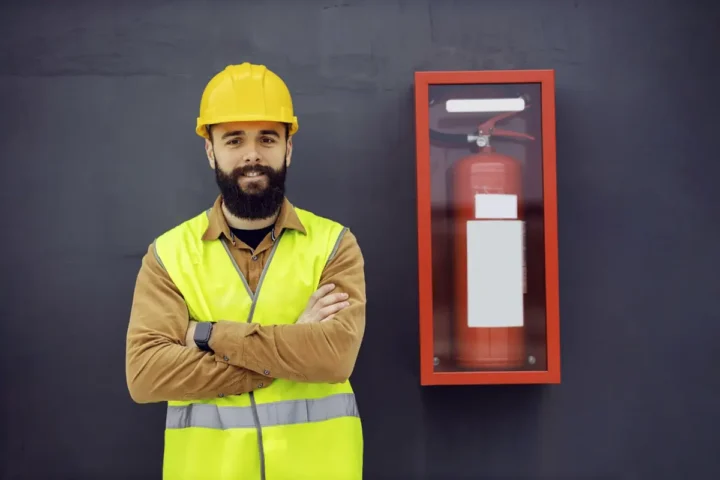From Industrial Sites to Transportation Hubs: Deploying BC and Purple K for Fire Safety
Fire risk is an ever-present concern in dynamic and often hazardous environments such as industrial establishments and bustling transportation hubs. Unlike hazards that would occur in a simple office fire, these settings probably involve a peculiar threat in the form of flammable liquids or combustible gases or complex electrical systems.
The fire suppression devices must thus be equally specialized and highly adequate. This is where chemical agents and, specifically, those of BC and Purple K extinguishers come into play. A deep comprehension of the processes and unparalleled effectiveness of purple k fire extinguisher uses in these vital areas is essential to protect lives and precious assets so that the right step can be taken rapidly, when a matter of seconds is the difference between life and death.

Extinguishers using water are ineffective, and sometimes even dangerous, for these accidental types: water can carry flammable liquids farther or present shock hazards upon electrical equipment. Hence, this absolutely vital gap in the efficacy of fire suppression that dry chemical extinguishers like BC and Purple K are designed to cater to.
A fire safety plan box installed on-site typically displays various types of extinguishers required for various areas according to the generated risk. BC dry chemical extinguishers use sodium bicarbonate, which interrupts the chemical reaction involved in the fire, effectively smothering the flames and providing rapid knockdown of Class B fires (flammable liquids and gases) and Class C fires (energized electrical equipment).
When it comes to purple k, it’s a stronger version of dry chemical: for its application, potassium bicarbonate is used, which is even better at breaking the chemical chain reaction responsible for fire. Both types are therefore necessary in any environment where such hazards are present.
Protecting High-Risk Industrial Environments
Industrial sites, from manufacturing plants to chemical processing facilities, are inherently high-risk environments. Here, the presence of flammable solvents, lubricants, paints, and intricate machinery with electrical components creates a perpetual potential for Class B and C fires.
A small spill or an electrical fault can quickly escalate into a catastrophic event if not contained swiftly and effectively. BC and Purple K extinguishers are purpose-built for these scenarios. Their dry chemical agents are non-conductive, making them safe for use on live electrical equipment, and they form a barrier over liquid fuels, preventing re-ignition.
They are commonly found near fuel storage tanks, power generators, welding stations, and control rooms, strategically placed to offer immediate response capabilities. Their ability to deliver a rapid knockdown is particularly valuable in these settings, where even a momentary delay can have significant repercussions.
Maintaining Security in Transportation Hubs
Transportation hubs, including airports, naval facilities, military bases, and service stations, present another set of unique challenges. Airports, for instance, deal with massive quantities of jet fuel, lubricants, and sophisticated electrical systems powering everything from navigation equipment to baggage handling.
Naval ships and military facilities handle various fuels, hydraulic fluids, and complex electronic systems in confined spaces. Service stations, by their very nature, involve gasoline and diesel. In all these environments, the speed and efficacy of fire suppression are paramount.
A fire on an aircraft or a naval vessel, or at a fueling station, demands an immediate response with an agent that can quickly smother liquid fires and safely tackle electrical blazes without causing further damage or harm.
The large sizes of Purple K extinguishers, in particular, are favored in such critical scenarios due to their enhanced fire-fighting capabilities, providing a robust defense where lives and high-value assets are continually at stake.
Selection, Training, and Readiness
Deployment of BC and Purple K extinguishers culminates the fire safety plan which includes hazards identification and risk assessment, proper selection, strategic placement, and extensive training. Facilities must carefully assess their specific fire hazards to determine the appropriate type and size of extinguisher required.
Larger units, including wheeled models, are often necessary for industrial or large-scale transportation environments where greater extinguishing capacity is needed. Ensuring these extinguishers are ULC listed, guaranteeing they meet rigorous safety and performance standards, is also crucial.
Most importantly, all personnel working in these high-risk areas need to be trained comprehensively on the operation of the specialized extinguishers, the specific classes of fires they are designed for, and the scenarios in which to use a BC or Purple K extinguisher in contrast with others.
Maintenance and inspection of these extinguishers are also paramount to ensure that these life-saving tools will always be fully charged and ready to be deployed at any instance.
Prioritizing the strategic deployment of BC and Purple K extinguishers while embedding them into an active fire safety plan framework would greatly secure industrial sites and transport hubs regarding their high fire risks.


